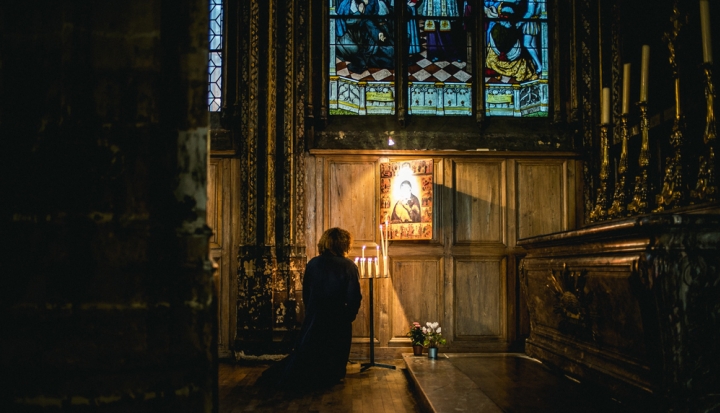A teaching evaluation once observed that I was “not afraid of silence” in the classroom. In reality, learning to be comfortable with silence was the hardest classroom management tactic for me to master. Spiritually, teaching has helped me begin to appreciate the role of silence in both prayer and moral theology. Silence as prayer—in all its relational and contextual complexity—can help us approach God and find spiritual clarity to speak in the face of unspeakable injustice.
Open discussions are crucial for teaching ethics. Yet the silence between asking a question and a student responding feels as if it is suspended in time. Despite the palpable anxiety, anticipation, and tension, I learned that only by resting in this silence can a thoughtful discussion emerge. Embracing silence allows questions to fill the room and new, unexpected insights to be shared. It also helps us recognize that sometimes words just fail. Accepting a place for silence in developing moral discourse has taught me to embrace a new kind of silence in prayer.
Growing up, I had a complicated relationship with silence. On the one hand I was taught that silence in prayer was a mark of humility and listening for God. “We need to find God, and he cannot be found in noise and restlessness. God is the friend of silence. See how nature—trees, flowers, grass—grows in silence,” urged St. Teresa of Calcutta. This vision helped me develop attentiveness to the presence of God in all of creation. Nevertheless, I struggled to find the silence.
On the other hand, my grandparents and parents taught me that silence in the face of injustice is complicity. In middle school my failure to be silent in the face of racism led to intense bullying. Silence would have been easier, but it also would have been tacit acceptance of racial slurs against other students. For a long time, even silence in prayer felt like an abdication of the injunction to “speak out, judge righteously, defend the rights of the poor and needy” (Prov. 31:9).
In class shared silence sometimes allows students to open up about their own experiences and personal spirituality in ways that are a witness, not mere discussion. When students share their experiences of racism and discrimination, it isn’t a discussion point or anecdote. Out of silence we are all invited to be present, and oftentimes this active silence is recognition that words fail to address the shared experience. I hope this dynamic of silence and presence helps move students to find their voice and speak up on behalf of themselves and others.
Spiritually, revelations of the inhumane treatment of migrants in detention centers at the border have made it difficult for me to pray. On social media I frequently see new investigative reports couched with the simple, agonizing prayer: May God have mercy on us. How can I pray for mercy while children remain in lice-infested cells without proper bedding or supervision? I believe in a God who forgave the individuals and the system that sentenced Christ to death on a cross. I search for a way to pray that God has mercy on us, yet I am rendered silent.
As a nation, “they know not what they do” does not apply. We know what we are doing and it continues. The asylum process and foreign policy are complicated. The basic human rights of migrants being held in detention camps are not.
As I still myself to pray, I am brought back to my experience at Golgotha in Jerusalem. I had no thoughts or words. I approach the cross in silence, embracing all the anxiety and tension of that moment. As I read story after story of abuses at the border, the spiritual silence of the cross helps me focus on the crucified peoples today. This silence in prayer, I hope, will lead to voice and action on behalf of justice and solidarity.
This article also appears in the October 2019 issue of U.S. Catholic (Vol. 84, No. 9, page 10).
Image: Unsplash cc via Joshua Davis












Add comment